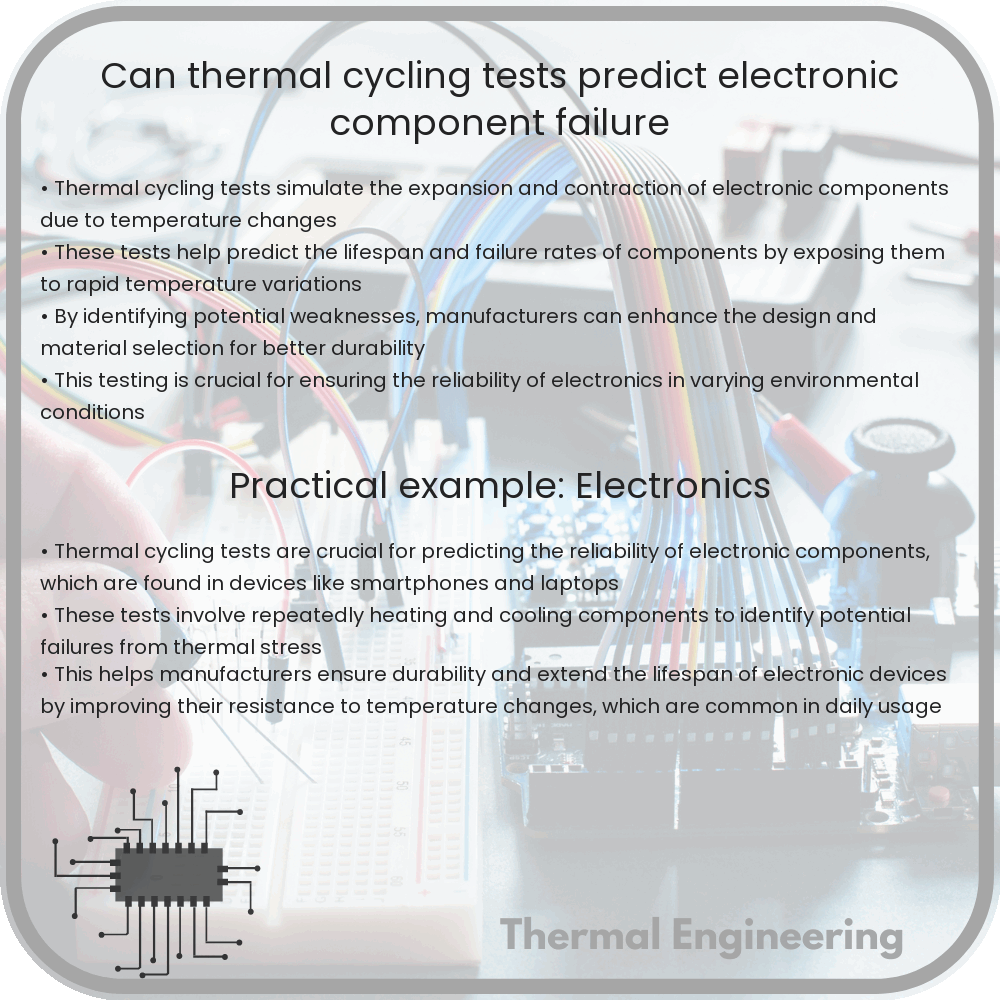Learn how thermal cycling tests evaluate the reliability and predict failures in electronic components by simulating temperature fluctuations.

Understanding the Role of Thermal Cycling Tests in Predicting Electronic Component Failure
Electronic components are integral to countless devices, systems, and applications in modern technology. From consumer electronics to critical aerospace systems, the reliability of these components is paramount. To ensure long-term functionality, one vital evaluation method employed is thermal cycling tests. This discussion explores the efficacy of such tests in predicting electronic component failure, delving into the mechanisms at play and the insights they offer into material behavior under fluctuating temperatures.
What is Thermal Cycling?
Thermal cycling refers to the process where electronic components are repeatedly subjected to alternating temperatures. This simulation is intended to replicate the natural conditions that components might experience during their operational life. The test involves cycling between high and low temperatures over numerous cycles to assess the reliability and identify potential failure mechanisms of the components.
Mechanics of Thermal Cycling
The primary challenge that thermal cycling addresses stems from the different expansion and contraction rates of the materials used in electronic components. Common materials such as metals, ceramics, and polymers have varying coefficients of thermal expansion (CTE). When an electronic device heats up (during operation) and cools down (when turned off), its materials expand and contract at these differing rates. This discrepancy can induce mechanical stresses within the component, leading to potential failures such as:
- Crack formation
- Delamination between different layers
- Joint failures in solder or other interconnects
Predictive Value of Thermal Cycling Tests
Thermal cycling tests are crucial because they help identify the durability of electronic components under thermal stresses. By accelerating the “real-world” conditions through repetitive heating and cooling cycles, engineers can predict the following:
- Component Lifespan: Testing provides an estimate of how long an electronic component is likely to function before failure due to thermal stress.
- Failure Modes: It helps in understanding specific failure mechanisms that are likely to occur in the electronic components due to thermal fatigue.
- Reliability under Extreme Conditions: These tests can evaluate a component’s behavior under unusual or extreme environmental temperature variations, which is particularly crucial for military and aerospace applications.
Limits of Thermal Cycling Tests
While thermal cycling is indispensable for assessing component reliability, there are certain limitations:
- They cannot replicate all operating environments; variations like humidity, pressure, and simultaneous mechanical loads are hard to incorporate effectively.
- The accelerated nature of the test might not always correspond perfectly to real-life application rates, potentially skewing life expectancy estimates.
Conclusion
Thermal cycling tests are a fundamental aspect of quality assurance for electronic components, offering valuable insights into thermal fatigue and component resilience. Although these tests are powerful predictive tools, they should be one part of a comprehensive testing strategy. By combining thermal cycling with other tests that mimic different environmental stresses and operating conditions, manufacturers can thoroughly ensure the reliability and performance of their electronic products.
In conclusion, understanding thermal cycling tests and their implications on electronic components allows engineers to design more durable and reliable electronics. This knowledge is crucial especially in fields where precision and dependability are paramount, thus broadening the limits of current technological applications.